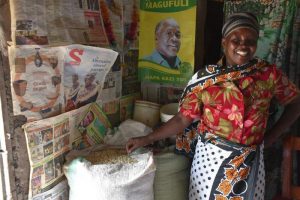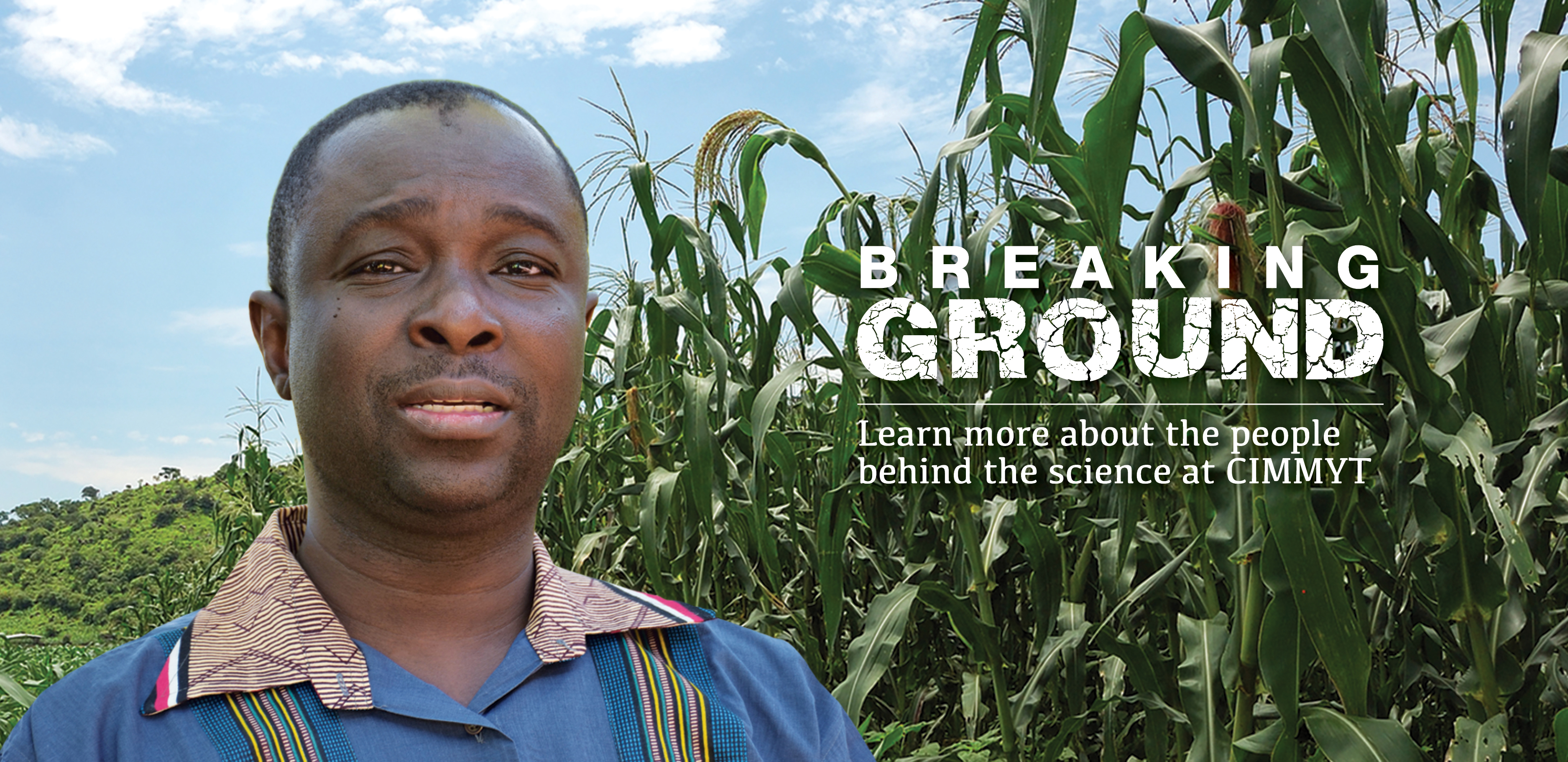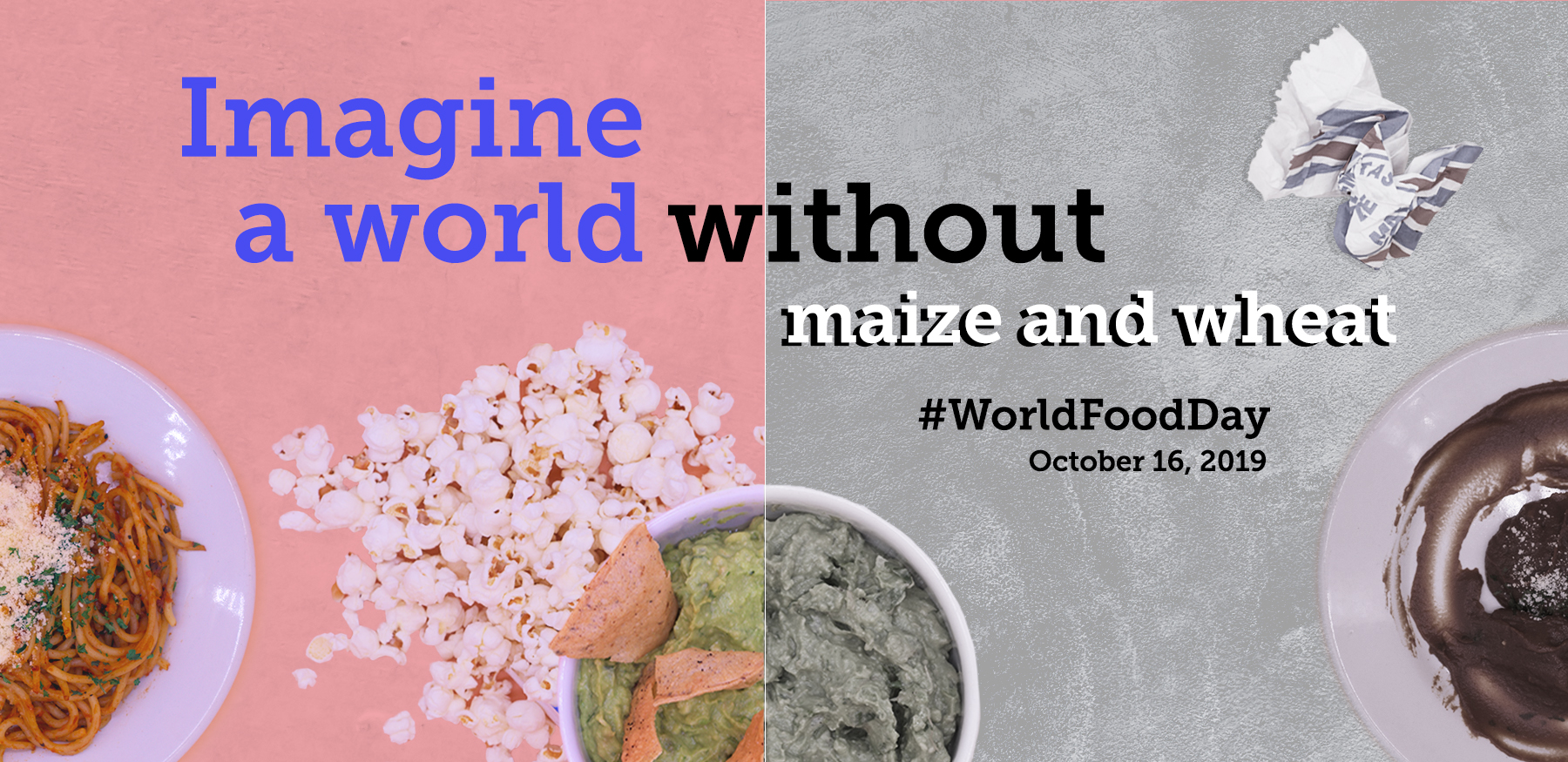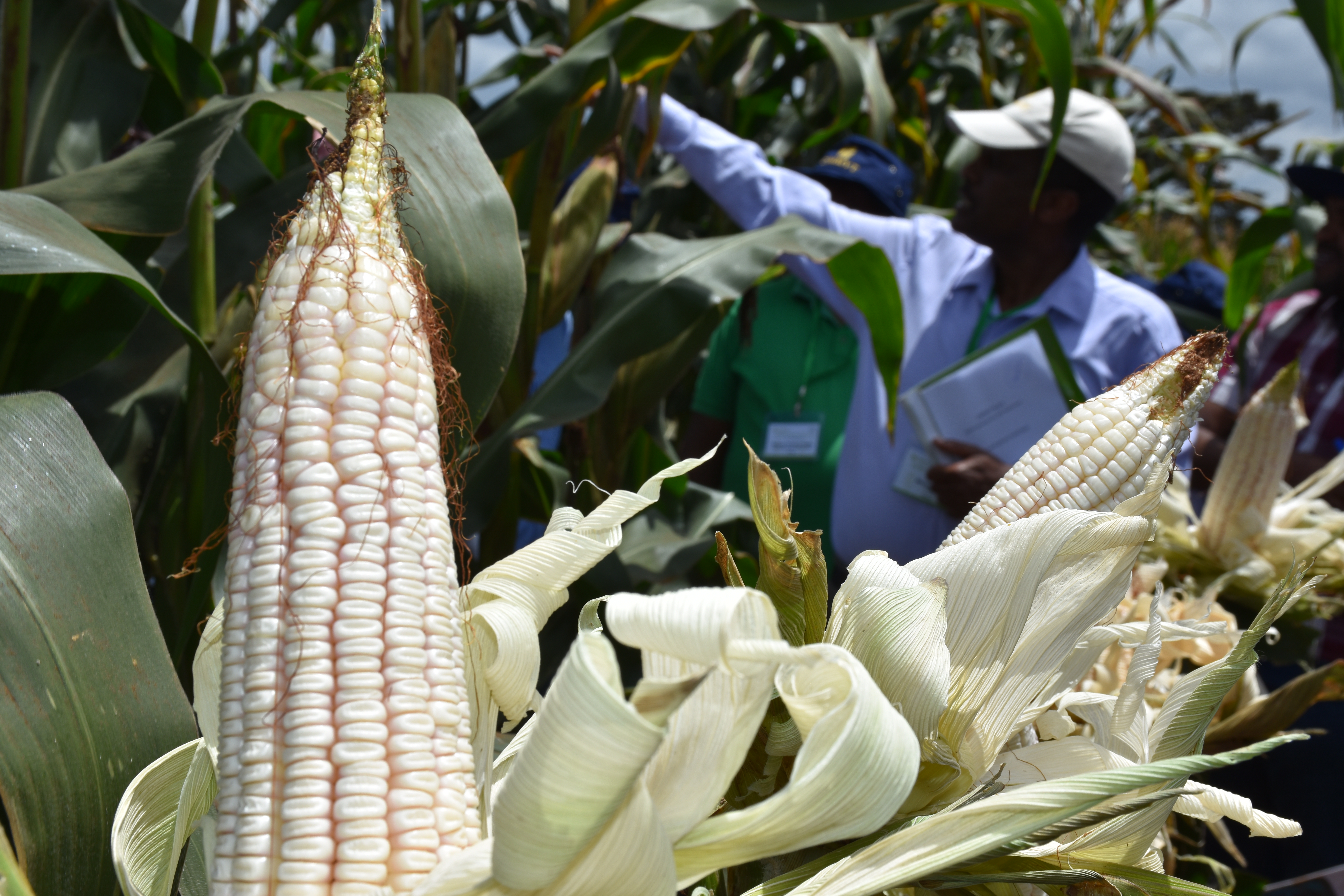
This story is one of a series of features written during CIMMYT’s 50th anniversary year to highlight significant advancements in maize and wheat research between 1966 and 2016.
EL BATAN, Mexico (CIMMYT) — In the early 1990s, before climate change caught popular attention, the United Nations Development Programme (UNDP) provided funding for an international team of scientists in Mexico to find a better way to breed resilient maize for farmers in drought-prone tropical areas.
Fast forward several decades and that scientific concept is now reality. By early 2016 more than 2 million farmers were acquiring and growing drought-tolerant varieties from that early research in 13 countries of sub-Saharan Africa, a region where maize, the number-one food crop, frequently fails under erratic rainfall and lethal droughts.
Survival of the fittest
The core methodology, developed at CIMMYT, was to genetically select maize lines that survive and yield grain under controlled drought or low soil nitrogen on experimental plots. This imparts tolerance in maize to both dry conditions during flowering and grain-filling, when the plant is particularly sensitive to stress, and to the nitrogen-depleted soils typical of small-scale farms in the tropics.
Maize plants are designed with male flowers, called tassels, at the top, and female flowers, known as silks, which emerge later from young ears and catch pollen. Research in the 1970s had shown that, under drought, maize plants whose silks appear soonest after tassels also produce more grain, according to Greg Edmeades, a retired maize physiologist who led development of CIMMYT’s drought breeding system in the 1980s-90s.
“We used that trait, known as anthesis-silking interval, as a key yardstick to select maize lines and populations that did well under drought,” he explained, citing important contributions from his post-doctoral fellows Marianne Bänziger, Jorge Bolaños, Scott Chapman, Anne Elings, Renee Lafitte, and Stephen Mugo. “We discovered that earlier silking meant plants were sending more carbohydrates to the ear.”
Ground-truthing the science
In their studies, Edmeades and his team subjected many thousands of maize lines to stress testing on desert and mid-altitude fields in Mexico, dosing out water drop by drop. Reported in a series of journal papers and at two international conferences on maize stress breeding, their results outlined a new approach to create climate-resilient maize.
“The idea was to replicate the two most common and challenging nemeses of resource-poor farming systems, drought and low nitrogen stress, in a controlled way on breeding stations, and to use this to select tolerant varieties,” said Bänziger, now Deputy Director General for Research and Partnerships at CIMMYT. “After eight cycles of selection for reduced anthesis-silking interval under controlled drought stress, Greg’s model maize population gave 30 percent more grain than conventional varieties, in moderate-to-severe drought conditions.”
But could the approach be implemented in developing country breeding programs, where researchers typically tested and showcased high-yielding, optimally-watered maize?
Capitalizing on several years’ experience in Edmeades’ team, in 1996 Bänziger aimed to find out, moving to CIMMYT’s office in Zimbabwe and beginning work with breeders in the region to develop Africa-adapted, stress tolerant maize.
“African farmers grow maize by choice,” she explained. “If you give them access to varieties that better withstand their harsh conditions and reduce their risk, they may invest in inputs like fertilizer or diversify crop production, improving their incomes and food security.”
The efforts started by Bänziger and several other CIMMYT scientists in sub-Saharan Africa involved large, long-running projects in the region’s major maize-growing areas, with co-leadership of the International Institute of Tropical Agriculture (IITA), extensive and generous donor support, and the critical participation of regional associations, national research programs, private seed companies, and non-governmental organizations. Partners also pioneered innovative ways for farmers to take part in testing and selecting varieties and worked to foster high-quality, competitive seed markets.
The most recent initiative, Drought Tolerant Maize for Africa (DTMA), has been responsible for the development and release of more than 200 drought tolerant varieties. A new phase aims by 2019 to attain an annual production of as much as 68,000 tons of certified seed of resilient maize, for use by approximately 5.8 million households and benefitting more than 30 million people in the region.
Maize stress breeding goes global
Selecting for tolerance under controlled moisture stress has proven so successful that it is now a standard component of maize breeding programmes in Africa, Asia, and Latin America, according to Edmeades.
“The long pursuit of drought tolerance in maize shows how successful research-for-development demands doggedness and enduring donor support,” said Edmeades, who credits former CIMMYT scientists P.R. Goldsworthy, Ken Fischer, and Elmer Johnson with laying the groundwork for his studies. “And, as can be seen, many donors and partners have helped greatly to amplify the impact of UNDP’s initial investment.”
Over the years, generous funding for this work has also been provided by the Bill & Melinda Gates Foundation; the Federal Ministry for Economic Cooperation and Development, Germany (GTZ); the Howard G. Buffett Foundation; the International Fund for Agricultural Development (IFAD); the Swedish International Development Agency (SIDA); the Swiss Agency for Development and Cooperation (SDC); the UK Department for International Development (DFID); and the US Agency for International Development (USAID).
This short history of drought tolerance breeding for tropical maize was developed in collaboration with UNDP, as part of CIMMYT and UNDP’s 50th anniversary celebrations, which coincide in 2016. To read the version published by UNDP, click here.
See also these stories about farmers’ circumstances and advances on drought tolerant maize in Africa:
* Peter’s resolve to grow maize amidst poor yields due to harsh climate and poor seeds.
* A 2011 post in Roger Thurow’s “Outrage and Inspire” blog.

 Innovations
Innovations 
